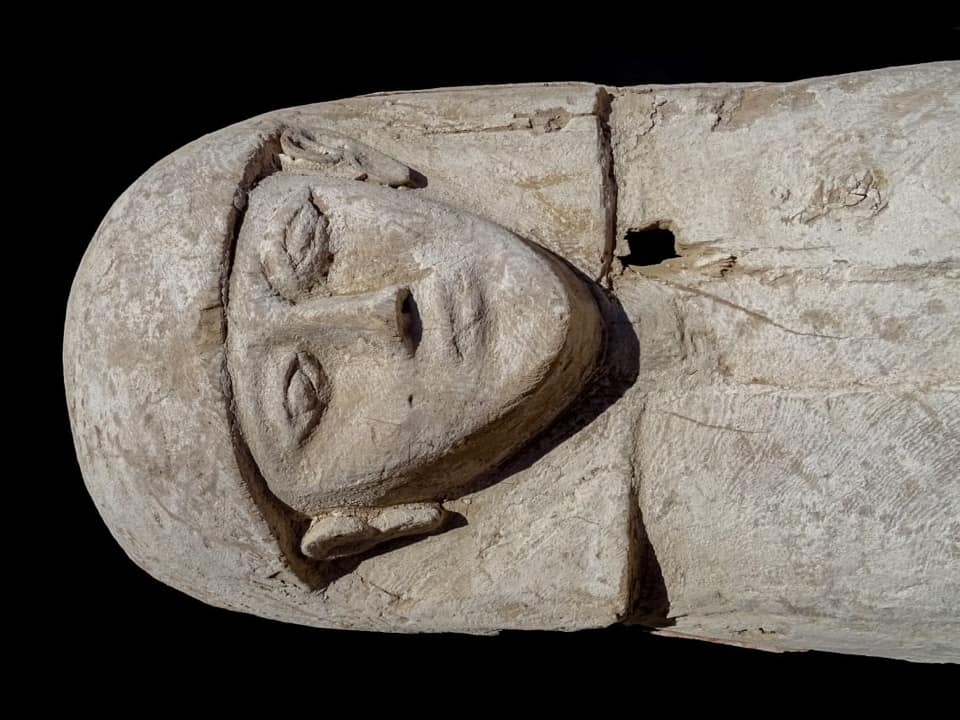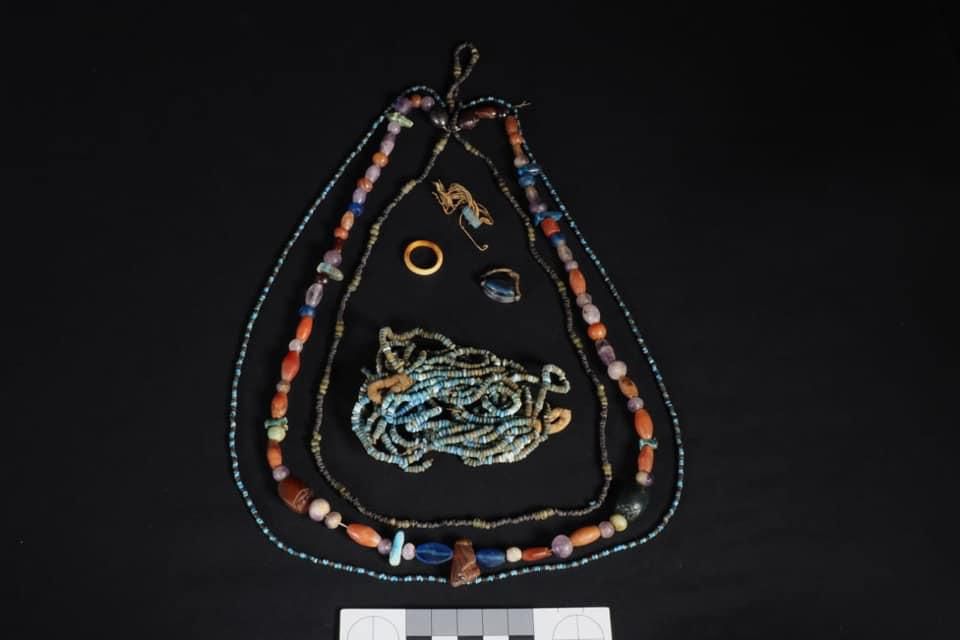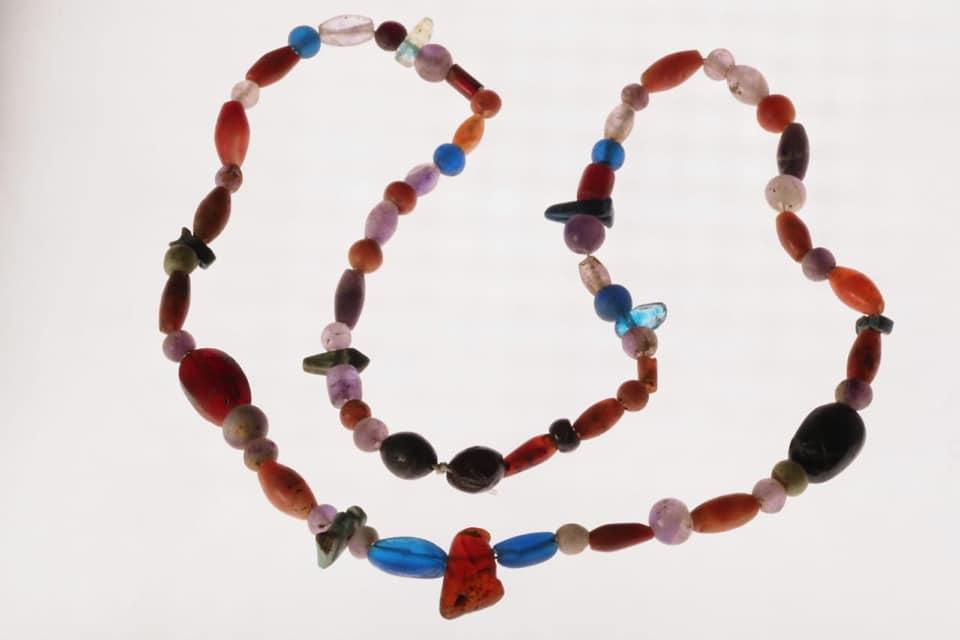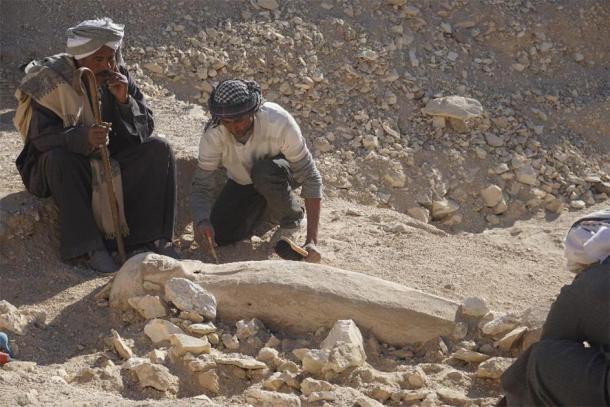
Over the years, archeologists have unearthed several royal tomb complexes in the Dra' Abu el-Naga' necropolis near Luxor, Egypt. However, the occupant of a 3,500-year-old wooden coffin, recently discovered in the region by a Spanish-Egyptian team, was not a pharaoh or an important royal official, but a mysterious teenager adorned with precious jewelry.
The scientists, led by Dr. José M. Galán of the Spanish National Research Council, estimate that the young girl, who was lying on her side, was between 15 and 16 years old when she died. While the body, which was covered in thin sheets, was too decomposed to determine the girl's identity and cause of death, her beautiful ornaments were in pristine condition.

They include two spiral copper-plated earrings, two rings made from bone and blue glass respectively, and four necklaces of varying lengths fastened together with a faience, or ceramic clip. Two necklaces are made of glossy ceramic beads with a bright blue finish, while the third comprises blue ceramic beads and green glass beads. Though they are all exquisite, it is the fourth necklace that impressed Galán the most. Made using 75 pieces of carved semi-precious stones like amethyst, carnelian, and amber, it features several amulets, including one depicting Horus, the Egyptian god of the sky.
The researchers speculate that the jewels, which provide evidence of the intricate ancient Egyptian craftsmanship, were most likely part of the young woman's bridal accessories. However, Galán says, "The richness of the trousseau for such a young person and with a relatively modest coffin is surprising."

Also perplexing is the coffin's location on the ground close to the tomb chapel of Djehuty, a general under the ancient Egyptian King Thutmose III (1508-1458 BC). Galán says, "To date, a dozen coffins have been found on the site left unprotected on the ground, which is unusual."
The archeologists believe the abandoned tombs were unearthed by grave robbers, who were forced to flee the scene before they could steal the precious artifacts inside. This explains why the ancient teenager's jewelry remained untouched.

The tomb, revealed on Egypt's Ministry of Tourism and Antiquities Facebook page on April 24, 2020, is among several exciting discoveries, which also include a 4,000-year-old funerary complex, made by Galán's team under the Djehuty Project. Now in its 19th year, the Spanish-Egyptian collaboration aims to excavate, restore, and publish works on the Dra' Abul el-Naga' Necropolis and other similar sites, to gain a better understanding of life in ancient Egypt during the 17th and 18th centuries.
Resources: Ministry of antiquities & tourism/Facebook, Smithsonian.com, ancient-origins.net
